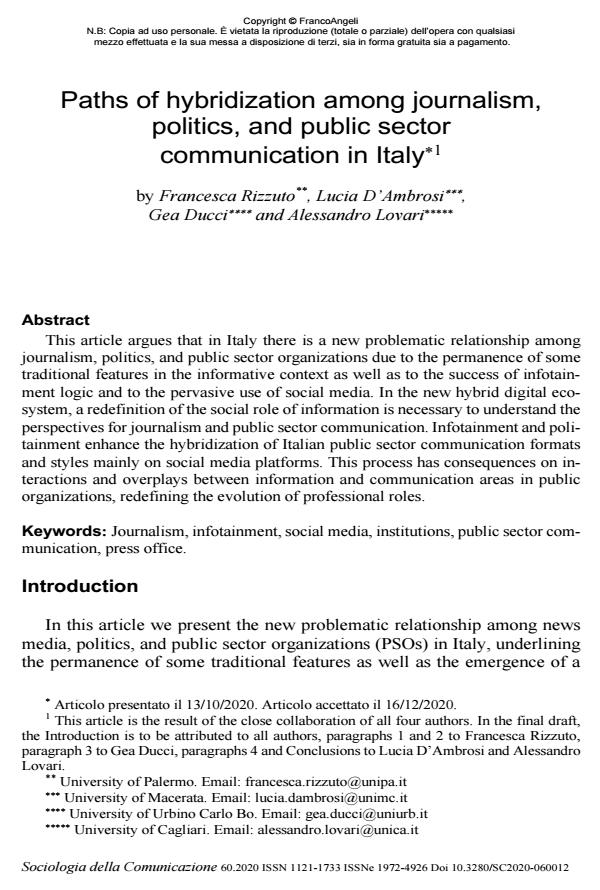Paths of hybridization among journalism, politics, and public sector communication in Italy
Journal title SOCIOLOGIA DELLA COMUNICAZIONE
Author/s Francesca Rizzuto, Lucia D’Ambrosi, Gea Ducci, Alessandro Lovari
Publishing Year 2021 Issue 2020/60
Language English Pages 17 P. 137-153 File size 351 KB
DOI 10.3280/SC2020-060012
DOI is like a bar code for intellectual property: to have more infomation
click here
Below, you can see the article first page
If you want to buy this article in PDF format, you can do it, following the instructions to buy download credits

FrancoAngeli is member of Publishers International Linking Association, Inc (PILA), a not-for-profit association which run the CrossRef service enabling links to and from online scholarly content.
This article argues that in Italy there is a new problematic relationship among journalism, politics, and public sector organizations due to the permanence of some traditional features in the informative context as well as to the success of infotainment logic and to the pervasive use of social media. In the new hybrid digi-tal ecosystem, a redefinition of the social role of information is necessary to un-derstand the perspectives for journalism and public sector communication. Info-tainment and politainment enhance the hybridization of Italian public sector communication formats and styles mainly on social media platforms. This process has consequences on interactions and overplays between information and com-munication areas in public organizations, redefining the evolution of professional roles.
Keywords: Journalism, infotainment, social media, institutions, public sector communication, press office.
- Party or policy? Examining news consumption and affective polarization in Italy David Coppini, in Contemporary Italian Politics /2025 pp.1
DOI: 10.1080/23248823.2025.2469428
Francesca Rizzuto, Lucia D’Ambrosi, Gea Ducci, Alessandro Lovari, Paths of hybridization among journalism, politics, and public sector communication in Italy in "SOCIOLOGIA DELLA COMUNICAZIONE " 60/2020, pp 137-153, DOI: 10.3280/SC2020-060012